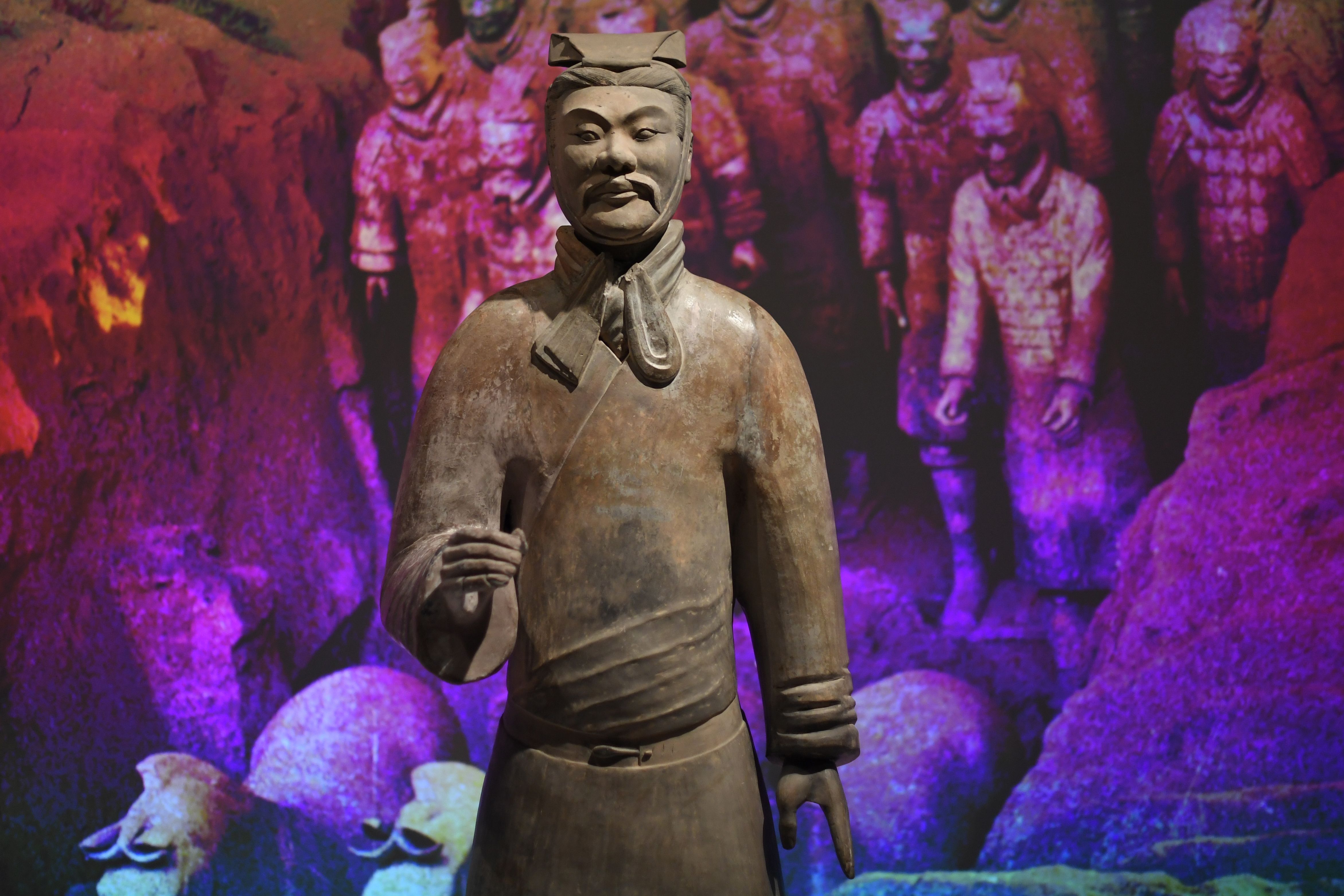
A judge has sentenced 29-year-old Michael Rohana to five years’ probation for stealing a finger from a Chinese terracotta warrior sculpture at Philadelphia’s Franklin Institute in 2017.
The man was caught on camera committing the crime after sneaking off from an ugly Christmas sweater party at the institution. Five and a half years after the drunken incident, Rohana apologized and expressed remorse for his actions. “Through all of this, I’ve earned a huge respect for these archaeological items,” he said in court, the Philadelphia Inquirer reported. “They are not to be messed with, broken, or damaged.”
The Delaware resident will pay a $5,000 fine and complete 100 hours of community service, with another hearing scheduled for next month to determine how much he must pay in restitution to the Franklin Institute, its insurer, and the Qin Shi Huang Imperial Mausoleum Museum that owns the ancient Chinese statue.
“It’s going to hurt,” U.S. District Judge Chad F. Kenney warned Rohana, chastising him for his actions. “Your conduct in this case was absolutely outrageous—quite frankly, sickening. Everybody around the world looks at this and says, ‘Yep, that’s those Americans. No respect for nothing.’”
Installation view of The Cavalryman in “Terracotta Warriors of the First Emperor” at the Franklin Institute, Philadelphia. Michael Rohana broke off and stole the thumb of the ancient artwork during an after-hours event at the museum in 2017. Photo courtesy of the Franklin Institute.
The Franklin Institute said it spent more than $50,000 for security barriers inside the exhibition and for travel expenses for Chinese officials visiting Philadelphia to examine the 2,000-year-old figure, known as The Cavalryman, in the wake of the vandalism. It cost another $25,000 to repair the statue, which is not currently on display.
Rohana told the judge that to help cover these expected reimbursement amounts, he is prepared to sell his collection of Nike sneakers, including valuable Air Jordans, which are estimated to be worth $32,000.
Rohana, who currently works at an HVAC company, told the court that he is a changed man. “I was wasting my time with no goals and no vision of where I wanted my life to go,” he said. “This has been a huge wake-up call for me.”
After Chinese officials demanded a harsh punishment for Rohana, the city of Philadelphia issued an official resolution of apology for the incident. Initially, the court had pursued felony charges of theft and concealment of an object of cultural heritage from a museum. But the jury failed to reach a verdict in Rohana’s first trial, largely because the experts in the case couldn’t agree whether or not the finger met the federal art theft statute’s $5,000 limit. The sculpture was insured at $4.5 million—but on its own, the broken left thumb carried questionable market value.
Installation view of “Terracotta Warriors of the First Emperor” at the Franklin Institute, Philadelphia. Photo courtesy of the Franklin Institute, Philadelphia.
There has been debate was over whether the incident was a simple act of vandalism, committed by an intoxicated young man, or a museum heist, motivated by the prospect of financial gain.
Rohana’s lawyer, Catherine C. Henry, argued against the latter: “These charges were made for art thieves—think like Ocean’s Eleven or Mission: Impossible,” she said during the 2019 trial. Rohana “wasn’t in ninja clothing sneaking around the museum. He was a drunk kid in a bright green ugly Christmas sweater.”
Rohana and his friends drove in from Delaware for one of the institute’s “Science After-Hours” parties, festively dressed with a Phillies hat. At one point during the event, he wandered into the “Terracotta Warriors of the First Emperor” exhibition, which was closed for the night—but with only a roped-off stanchion blocking access to the space.
Inside, Rohana posed for a selfie with an artwork near one of the statues, and texted his friends to encourage them to join him in the darkened galleries. Before he left, he snapped the finger off The Cavalryman and stuck it in his pocket. (The thumb had previously been broken and reattached.)
The broken thumb on The Cavalryman, the Terracotta Warrior statue vandalized by Michael Rohana at an ugly sweater party at Philadelphia’s Franklin Institute. Photo courtesy of federal prosecutors.
Thanks to credit card records and video surveillance, the FBI was soon able to identify Rohana, and paid a visit to his home in February 2018. Rohana immediately confessed and returned the broken finger, but was that was just the beginning of his legal saga.
The first case ended in a mistrial; the second trial was delayed due to the pandemic. Rohana finally reached a deal with prosecutors this April, pleading guilty to one misdemeanor count of interstate trafficking an archaeological resource in interstate commerce.
The Franklin Museum was one of two U.S. museums the Chinese government agreed to let host a traveling exhibition of the terracotta warriors, organized by the Shaanxi Cultural Heritage Promotion Center. The government carefully guards the ancient artworks, never showing more than 10 at a time at an international venue.
The historic statues are among the 8,000 soldiers created for the tomb of China’s first emperor, Qin Shi Huang, discovered by rural farmers in northwest China in the 1970s. Because they were made from clay to be buried, the statues are fragile and prone to damage. The Cavalryman is one of only a handful of the fragmentary figures that have been fully restored.